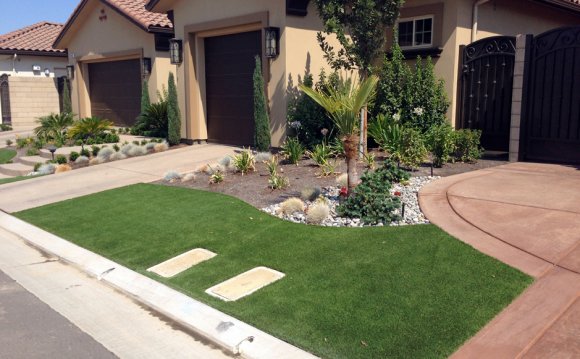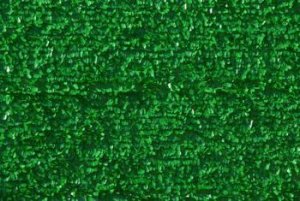
 Artificial grass is green, but the similarities to real grass often stop there.
Artificial grass is green, but the similarities to real grass often stop there.
Your front lawn is one of the first things visitors notice as they pull into your driveway. While many people opt for the real thing, synthetic grass offers an alternative to a living lawn. If you're trying to decide whether you should install real sod or synthetic turf in your front yard, several general criteria and factors to consider can help you make an educated choice.
Installation Costs
The price for both artificial turf and real turf vary depending on the type of synthetic or natural grass you're considering, and regional-dependent costs such as the price of grass seed in your area. But you can typically expect to pay anywhere from $4, 000 to $10, 000 per 1, 000 square feet for synthetic grass. On the other hand, it costs approximately $500 to lay 1, 000 square feet of live sod, and approximately $10 to $20 to cover that same area with grass seed.
Cooling Effects
Your front lawn affects more than just your home's appearance. Because it's close to your house, it also plays a role in the temperature of your home. The average front lawn that's made of living grass has a cooling effect on its nearby environment. A synthetic lawn doesn't provide a cooling effect, and its plastic and rubber components can actually increase surrounding temperatures. This makes it hot for anyone on the lawn and may also affect the temperature of your home.
Texture and Feeling
Athletes and other people who come into regular contact with both synthetic and natural grass typically rate real grass as being softer and more comfortable against bare skin compared to the sometimes abrasive texture of fake turf. This may be a key criteria if you plan to regularly use your front lawn for family picnics, yard sports and other activities.
Maintenance Requirements
The typical American adult spends 12 minutes every day keeping his lawn and landscape in top shape. This adds up to dozens of hours every year. If you're considering artificial turf because it may save you time, you are partially correct. Real lawns require a lot of upkeep, including regular mowing, watering, aerating, fertilizing and dethatching. Synthetic turf requires none of this, but it does require brushing to keep the blades upright, as well raking or vacuuming to remove debris, and occasional treatment against bacteria or mold growth on its surface. While specific time comparisons aren't possible due to the variety of both natural and synthetic turf types, neither option is completely maintenance-free.
Environmental Impact
Real, natural grass lawns play a big role in the environment. For example, the average 50-square-foot front lawn releases enough daily oxygen to provide for a family of four, while also capturing dust and debris and absorbing carbon dioxide. Artificial turf can't do any of this, and may even release odors and other substances when exposed to constant sun and heat. But an artificial lawn can also have environmental benefits. For example, it doesn't require watering, which may help you conserve water, and also doesn't need fertilizer or pesticides.















